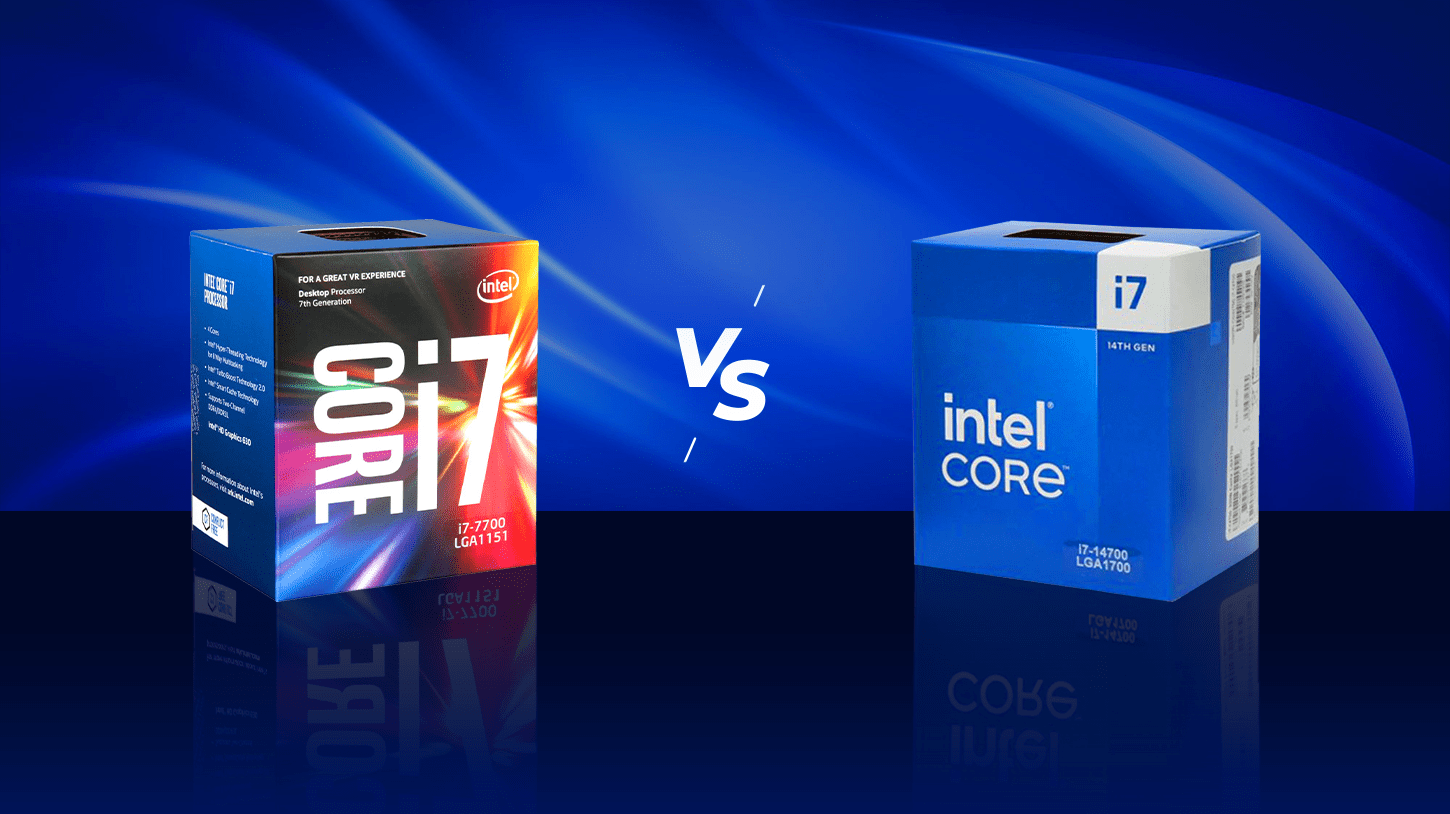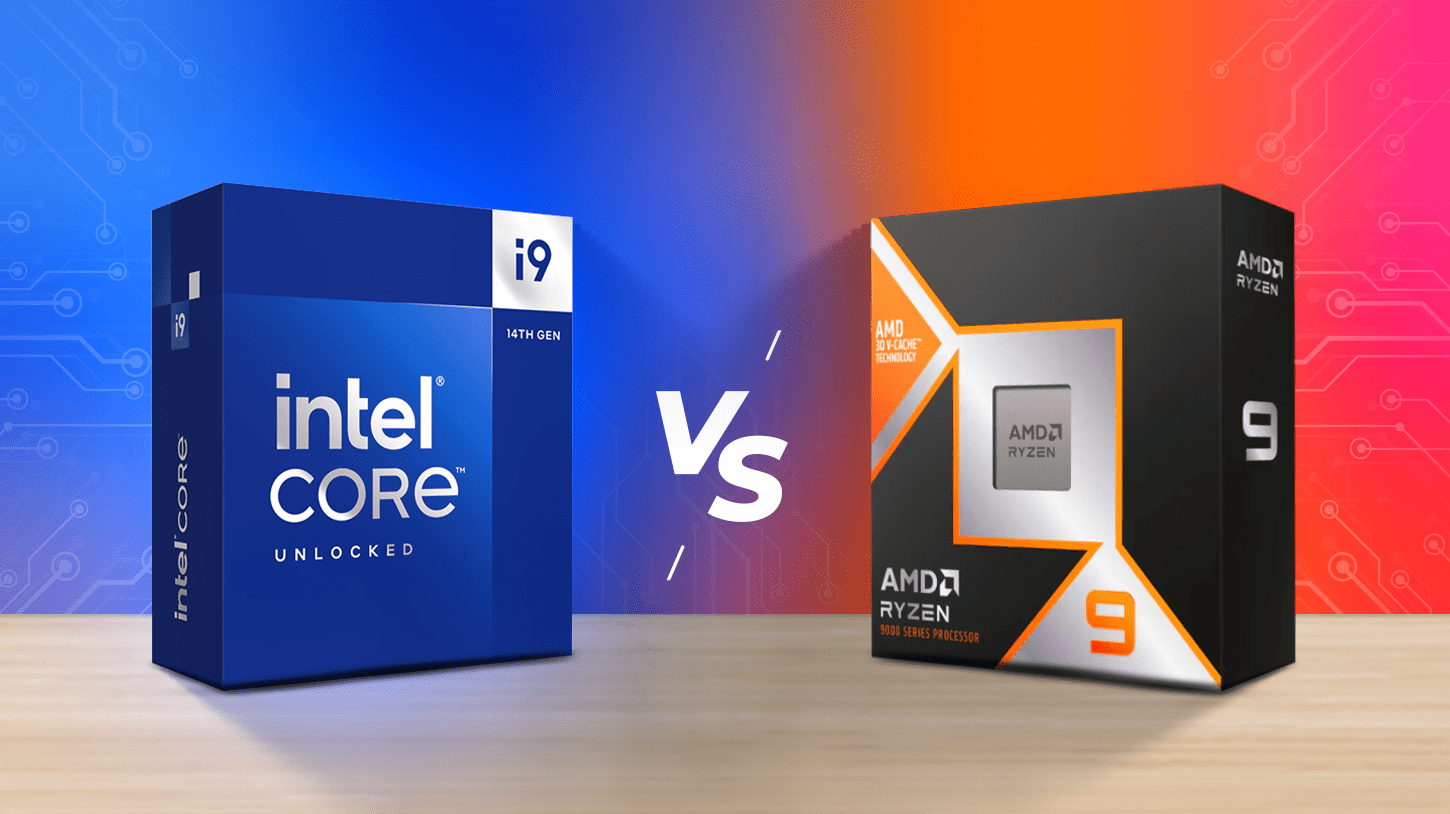7th Gen vs 14th Gen Intel Processors: What’s the Difference?
The processor market is always changing, and Intel works hard to stay ahead. With the new 14th gen Intel Core processors, the company wants to offer better performance for tough tasks. This raises an important question: what makes the 14th gen different from earlier models, and how does it compare to AMD’s Ryzen series? This article will look into these points. It will study the improvements between 7th Gen vs 14th Gen, and give insights into how well Intel’s latest CPUs perform.
Evolution of Intel Processors
Intel has always worked hard to improve processor technology. Each new generation brings better designs, improved performance, and exciting features. We have come a long way from simple single-core CPUs to the powerful multi-core processors we use today. Intel has been important in changing how we use computers.
7th to 10th Gen
The 7th generation, called Kaby Lake, improved the 14nm process. It offered small performance gains over the 6th generation, known as Skylake. The 8th generation, named Coffee Lake, and its update, Coffee Lake Refresh, brought a big change. They added more cores to the regular lineup, making six cores common in many products. The 9th generation, also Coffee Lake Refresh, gave a further bump in clock speeds, which increased performance even more.
The 10th generation, featuring Ice Lake and Comet Lake, was another major change. It used a better 14nm process and focused on stronger graphics and AI improvements. This set the stage for future growth. It is worth mentioning that Ice Lake was mainly for mobile devices, while Comet Lake served both desktop and mobile uses.
11th to 14th Gen: What Changed?
The 11th generation, called Tiger Lake, marked a big change with the launch of Intel’s 10nm SuperFin process technology. This generation improved how well devices conserve power and boosted graphics performance. The next generation, 12th gen, known as Alder Lake, introduced a new mixed architecture. This design used Performance (P) cores for heavy tasks and Efficient (E) cores for background work. This change greatly improved how well multiple tasks could be handled at the same time.
In the 13th generation, named Raptor Lake, Intel improved the mixed architecture by adding more E-cores and increasing performance. The 14th generation, Raptor Lake Refresh, builds on this success with faster clock speeds. It also includes software upgrades like “Intel Application Optimization,” which focuses on boosting gaming performance. However, the 14th gen is more about making improvements rather than completely changing the design.
- Increased clock speeds across both P-cores and E-cores, resulting in improved single-threaded and multi-threaded performance for GPU tasks.
- Enhanced Turbo Boost frequencies for even greater performance bursts when needed.
- Continued support for DDR5 memory, enabling faster data transfer rates and improved overall system responsiveness.
- Introduction of “Intel Application Optimization,” a software-based performance enhancement targeting specific games.
Performance Metrics Across Generations
Looking at how different generations of processors perform shows us the improvements in power and efficiency. Tests done on various programs and games give us useful information about the real benefits of each generation’s design and technology upgrades.
By studying benchmark results and performance trends, we can see how much processor technology has grown. This helps users choose wisely when they are thinking about upgrading to a newer generation CPU.
Benchmarking 7th Gen Processors: Key Highlights
The 7th gen Intel processors may not be the newest, but they still performed well for their time. Benchmark results proved they could handle daily tasks, gaming, and content creation.
For example, in Cinebench R15, a well-known CPU rendering test, the Core i7-7700K, a top 7th gen processor based on Sandy Bridge architecture, showed strong performance with a single core, similar to some newer CPUs and games like Star Wars Jedi. However, you should keep in mind that benchmark results can change based on the workload and system setup. If you run more demanding games and applications, you will see the performance increase in newer generations.
Check out more laptops here!
From 8th to 10th Gen: Performance Leap and Efficiency Gains
The shift from 7th gen to 8th gen brought better performance thanks to more cores in mainstream processors. For instance, the Core i7-8700K had six cores, unlike the four cores found in the 7th gen version. This extra core count meant a big boost in performance for multi-threaded tasks. This made the 8th gen a great choice for both content creators and gamers.
In the 9th gen, there were more upgrades with higher clock speeds and better heat management. The Core i9-9900K, featuring eight cores and faster speeds, helped Intel stay the leader in the high-end laptop market. The 10th gen CPUs then focused on better integrated graphics and AI features. This improved how users experience games and smart applications.
11th to 14th Gen: The Era of Hybrid Architecture
The 11th gen introduced exciting new technology with Intel’s 10nm SuperFin process. This advance improved efficiency and allowed for higher clock speeds, which boosted performance and battery life in mobile devices. The 12th gen was a big leap, as it introduced Intel’s hybrid architecture. This setup included Performance (P) cores and Efficient (E) cores. This change made a big impact on how processors work. It allowed better performance by spreading out tasks between the different core types.
The 13th gen improved the hybrid architecture even more, solidifying Intel’s place in the market. The performance boosts, especially with DDR5 RAM and UHD graphics, were impressive, particularly in multi-threaded applications and games that took advantage of the core design. Finally, the 14th gen is more of a refresh rather than a full redesign. However, it still offers good improvements in performance through higher clock speeds and specific software tweaks.
Check out more laptops from Lenovo!
Technological Innovations and Features
Intel is not just about making its processors faster. The company also adds new technologies and features to improve how we use computers, including advancements related to the motherboard. These updates aim to make our experience better by offering new abilities, boosting efficiency, and meeting the changing needs of users.
Intel focuses on research and development. This work has brought improvements in areas like artificial intelligence (AI), integrated graphics, and security, including performance enhancements for popular games like Rainbow Six Siege. These advancements change how we use our devices and create new opportunities for us.
Check out more laptops from Acer!
Introduction of AI Capabilities in Recent Generations
Intel sees that artificial intelligence is becoming more important. So, they have added AI features to their latest processors. These AI improvements, supported by Intel’s unique AI tools, help devices work with AI tasks more smoothly. As a result, users can enjoy better image and speech recognition, along with applications that can learn and adapt to how they use them.
Now, Intel Core processors include technologies like Intel Deep Learning Boost. This speeds up AI tasks and helps with AI work in the background while reducing power consumption. These updates show Intel’s strong aim to lead in the AI scene. They provide the needed support for AI processing, allowing software developers to build smarter and more advanced applications that use AI’s potential.
Check out more laptops from Asus!
Thermal Management Improvements Over the Years: 7th Gen vs 14th Gen
Efficient thermal management is very important for keeping processors performing well and lasting a long time. Intel has worked hard over the years to improve the thermal management in its CPUs. These improvements help the processors maintain their best performance without overheating, which is vital for demanding tasks like gaming and content creation.
The new 14th gen CPUs use better designs, smart power management, and improved thermal materials to remove heat quickly. This allows for higher clock speeds and stronger performance when under pressure. The advancements in thermal management make sure that Intel processors work well and stay within safe temperature limits. This leads to a better experience for users.
Check out more laptops from Dell!
Gaming and Application Benchmarks
Benchmarking is very important for checking how well processors work. For gaming and apps, benchmarks show how different CPU generations perform in real situations. This helps people decide about upgrading their hardware or building new systems.
In this section, we will look at gaming and application benchmark results, including those using a high-performance graphics card. We will compare 7th gen CPUs with the 14th gen CPUs. This will show us the performance improvements made over the years. We will also highlight the progress in gaming and app processing abilities.
Gaming Performance: 7th Gen vs 14th Gen
The gaming world has changed a lot since the 7th generation. Comparing the 7th gen and 14th gen processors shows big improvements in performance over the years. Now, games need more from the CPU. They require more cores, faster clock speeds, and better processing power. The 14th gen, with its hybrid architecture and higher core counts, meets these needs well. It offers much higher frame rates (FPS) and smoother gameplay than the 7th gen.
You can see the improvements mostly in CPU-heavy situations. Here, the processor is important for creating detailed game worlds and realistic physics. Games that use many threads, like modern big titles, show what the 14th gen’s hybrid architecture can really do. This pushes gaming performance to new levels.
Check out more gaming laptops here!
Application Processing: Analyzing the Generational Shift
The shift from 7th gen to 14th gen processors shows a huge boost in how applications are handled. The 14th gen CPUs can work well with demanding programs, including tools like Adobe Premiere Pro and Blender, as well as complex engineering simulations. The big rise in performance comes from better designs, more cores, faster clock speeds, and bigger cache sizes.
Intel’s hybrid architecture, which started with the 12th gen, has changed how applications are processed. It uses both Performance (P) cores and Efficient (E) cores. This setup helps the CPU smartly manage tasks. It assigns strong cores to demanding programs and uses E-cores for easier tasks. This helps the computer run smoothly and respond quickly even when using multiple heavy applications at the same time.
Conclusion
In conclusion, the new Intel processors have come a long way from the 7th to the 14th Gen. There have been big improvements in performance, efficiency, and tech features. Each generation advances skills in gaming, running applications, using AI, and managing heat. The 14th Gen is unique because of its hybrid architecture and better AI abilities. This makes it more powerful than earlier generations. If you are thinking about upgrading or buying a new processor, it’s important to know the specifications and differences between these generations. This will help you make a good choice. For more details on the latest processors, including the new Intel offerings, please reach out for commercial information.
Frequently Asked Questions
What makes the 14th Gen processors superior to earlier generations?
The 14th gen processors are better than older models thanks to higher clock speeds, a better hybrid architecture in the i7 models, and less power use. These things work together to boost performance in many types of applications and tasks.
Can 7th Gen processors still compete in today’s market?
7th generation processors can handle simple tasks and older apps. However, their performance and power consumption do not meet today’s needs for more demanding applications and current usage patterns.
How has power consumption evolved from 7th Gen vs 14th Gen?
Power usage has improved as performance has advanced from 7th gen vs 14th gen. The 14th gen CPUs may use more power at their highest loads, with higher voltage requirements. However, they usually provide better performance per watt. This leads to better energy efficiency for daily tasks.

